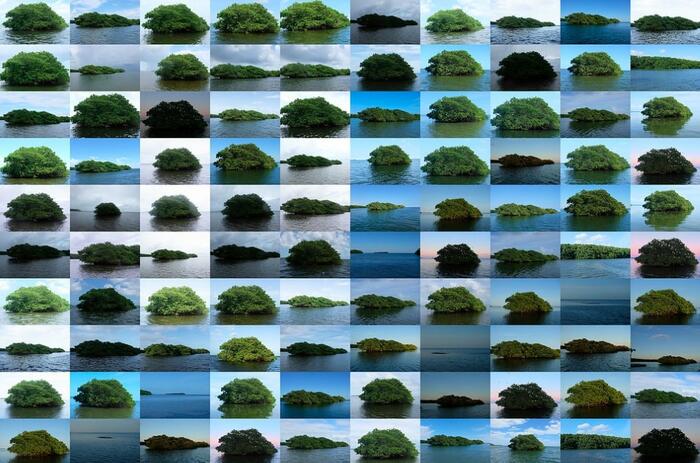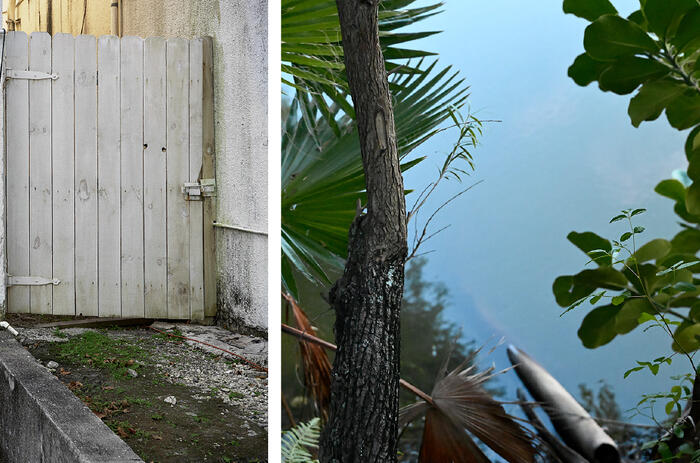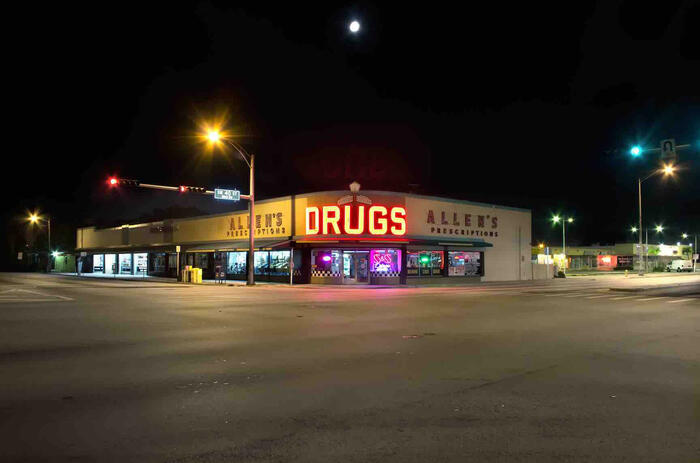JUAN RAÚL HOYOS AND HIS REDEFINITION OF THE GRID
Geometries Reimagined, the title of the inaugural exhibition at the Tanya Brillembourg Art space, inquires the way in which the incessant transformation of the abstract forms imagined since cave art, is once again realized in the works of Colombian Juan Raul Hoyos, Guatemalan Tepeu Choc, and Haitian Marcus Blake. By different means, the three of them confront the form that, since the onset of the 20th century, generated the whole current of geometric abstraction imposing itself, according to Rosalind Krauss, as "the emblematic image of the modernist ambition" [1]: the grid. Its presence, explicit or tacit, continues to be unraveled and remade incessantly in contemporary art, and it is no stranger to that "schizophrenia" which, as Krauss wrote, arises between its concentration on the materiality of the pictorial surface and the undeniable spiritual tension that its mythical geometry contains [2]. No less is the opposition between the "discursive silence" sought in the grid through the "complete liberation from naturist appearances" [3], and the paradoxical conversion of its geometry form ─inexistent in nature─ into the matrix of urban modernity: Mondrian ended up creating Boogie Woogie, 1943, in allusion to the rhythm and pulsating vibration of New York.

The gallery’s first floor is focused on the display of Juan Raúl Hoyos’ (Colombia, 1962) series Redefinición del Cuadrado, 2021, to the analysis of which this text is dedicated. In this work, the artist is closer than ever to a conceptual game with an appearance of an abstract geometric painting, which conceals while somehow potentiates the urban photographic evidence which remains, as always, the point of departure of his work. The beginning of a unique process in which the media transmigrate until they generate a simultaneous return and distancing, of appropriation, destruction and reconstruction, imaginative and deeply sensitive, of the square. In each work there is a residue of a drift, and of operations that combine the rigor of technique and creative chance with the freedom of the material itself and its transformations.
From afar, this series, created in polyptychs of four monochromatic oeuvres retaking Mondrian’s red, white, black and yellow, might seem to be a pictorial appropriation of neoplasticism’s or suprematism’s quests; but Hoyos gave up brush painting 30 years ago. His technical process is essential to understand the implications of his work, marked by a hybridization between media parallel to his transit between the urban-existential and the abstract expression. He emulates square paintings—“related to construction”—with a sort of unique serigraphic printing made with oil paint instead of ink, whose design derives from some of the photographs he has taken during his drifts from Miami’s downtown to the neighborhood of Little River. “My eye works—he says—like a shifting lens capable of taking big long shots of constructions or demolitions, but also close ups of details which, once enlarged, look like abstractions.” He has built a vast archive, “a photographic bank,” containing traces of the fast-paced urbanization in cities like Miami and its gentrification, or records of vertiginous demolitions, as well as pauses in the act of inhabiting a space, or walking as if going nowhere, while capturing segments of gratings, access ramps and other details. Sometimes the squares come from newspaper or magazine photographs. In all cases, these color photographs digitalized in black and white, printed in slides by way of negatives, and transferred to a silk plate covered with photographic emulsion, make up the matrix of the grids of urban transformation on which all of his works are based. “I don’t go out hunting scenes: the images come to me,” he stresses, remembering the night when he saw, in a building open in half, “like a wooden tissue, some staircases made for demolition.” Each square comes from a photograph and witnesses the city’s experience.
In the second phase of his creative process, Hoyos pours oil paint, as if it were serigraphic ink, on those silk grids, transferring them to a previously constructed collage: a square wooden support clothed with linen, canvas or silk which acts as a gathering stage for a conglomerate of fabrics or papers, found sometimes in the dump, that he combines in a personal ritual, as random as it is affective, since he works with existential residues. Once the grid has been transferred to the whole, Hoyos gesturally intervenes: he unwrinkles, lifts, displaces, carries out deft movements on these materials displayed on the plane, so as to unveil new forms that raised above. Then he encapsulated them in a hand-cut wooden container altered by the painting process—thus bestowing a vital continuity on the work—. Each one of these volumetric square redefinitions are still subject to material change: “Oil is organic and acts here as a sealer of the materials and keeps on transforming their tonality and consistence with time,” Hoyos explains. His gesturality hides, under layers of oil, segments of images in which he has transferred the spatio-temporal photograph to the timeless frame of the square. None of these oil silkscreen prints that contain urban registers and resemble painting, but summon the three-dimensionality of small installations, can have editions. It is a ritual he repeats work by work.
If, as Krauss remarked, the presence of the grid entails "a transference in which nothing changes place," [4] Hoyos is stirred precisely by the fact that the physical elements of his works are subject to the very randomness of folded paper, of fraying, and are thus affected by external conditions. The essential abstraction he makes of the urban ─territory and scaffolding of his oeuvre─ embraces the corruption of the changing nature of matter, and even the frontier in which it breaks up: if it is fabric it unravels, if it is wood it stains, if it is paper it falls apart. But, at the same time, he rejects the pollution that floods the culture. Hence, in this series he excluded the blue that Mondrian used and the green that he eschewed, convinced that the urban and media use of both colors and the names that designate them has become a visual and textual resource used to the point of abuse to simulate the idea of sustainability: it abounds in the images that cover demolitions, and in ads for hasty construction projects, alien to the balance of their surroundings. Instead, in these asymmetric geometric compositions with primary colors which appear to be paintings but actually represent the very energy of creation overflowing the urban grid and where different media transmigrate—from photography to serigraphy with oil painting and assembly—, Juan Raúl Hoyos turns the random and ritual coincidence of images and found materials into a connection with the possibilities of reinvention of the grid in art as well as in life. Knowing that each grid contains traces of the way of inhabiting a planet today marked by the tension of isolation, he thinks that we are called to live in "Re" mode: "Reinventing ourselves, restarting, reevaluating, recomposing, redefining the vital grid".
[1] Krauss, Rosalind, “The Grid”, October, Vol. 9 (Summer, 1979), The MIT Press, Massachusetts, pp. 50-64 www.jstor.org/stable/778321.
[2] Ibid. In his essay on Neoplasticism, Mondrian wrote that art gives a visible expression to the evolution of the spirit and, conversely, of matter. https://www.theartstory.org/movement/neo-plasticism/.
[3] Ibid
[4] Ibid








